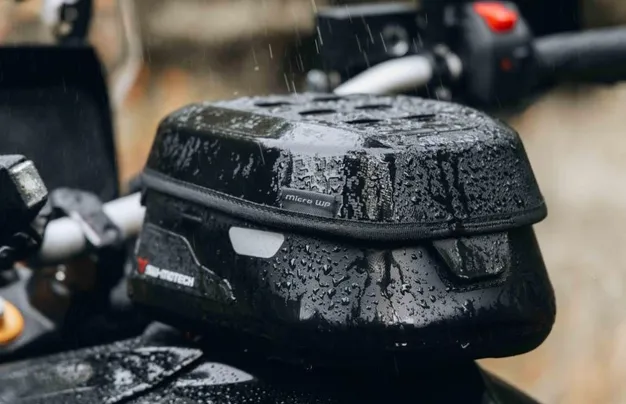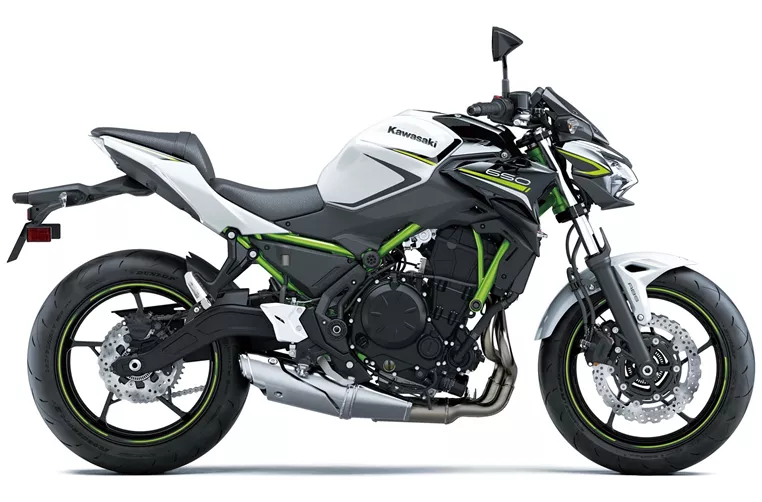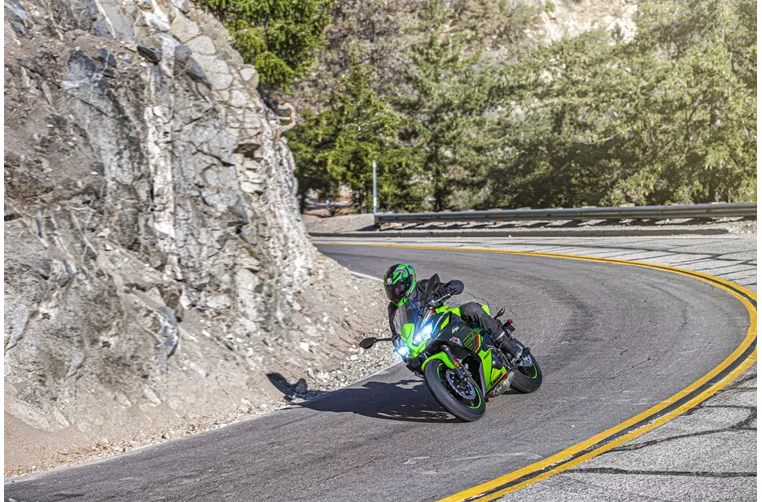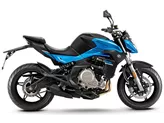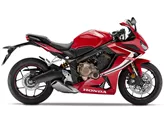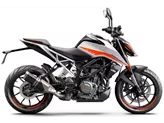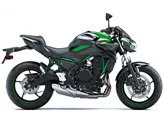Kawasaki Z650 2020 vs. Kawasaki Ninja 650 2023
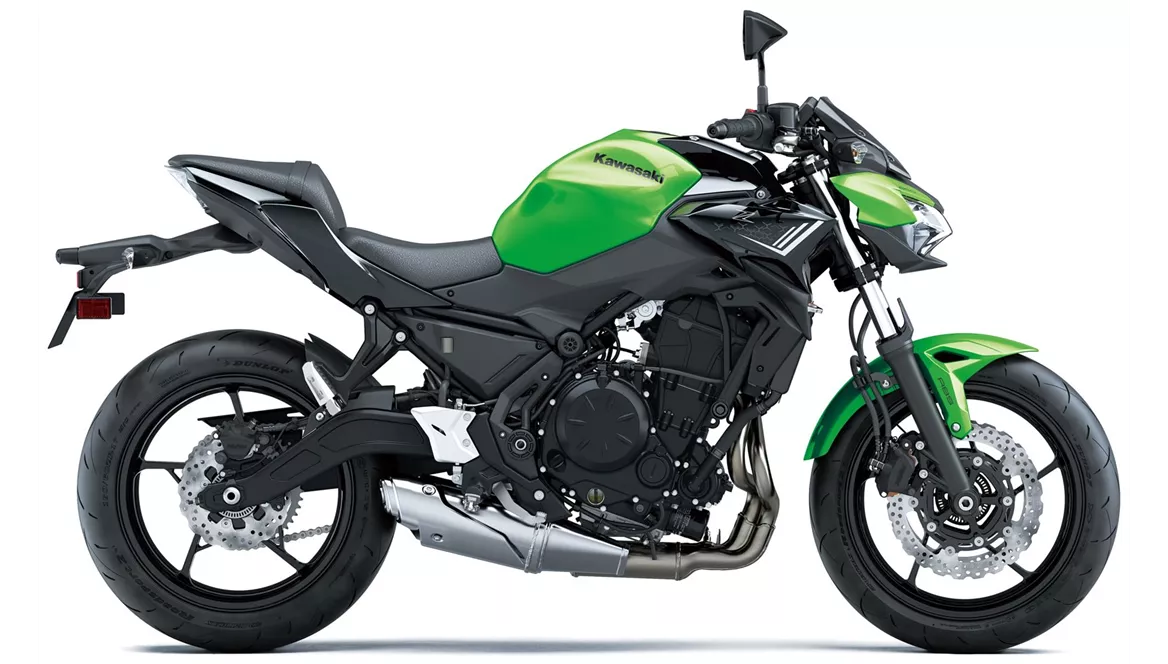
Kawasaki Z650 2020
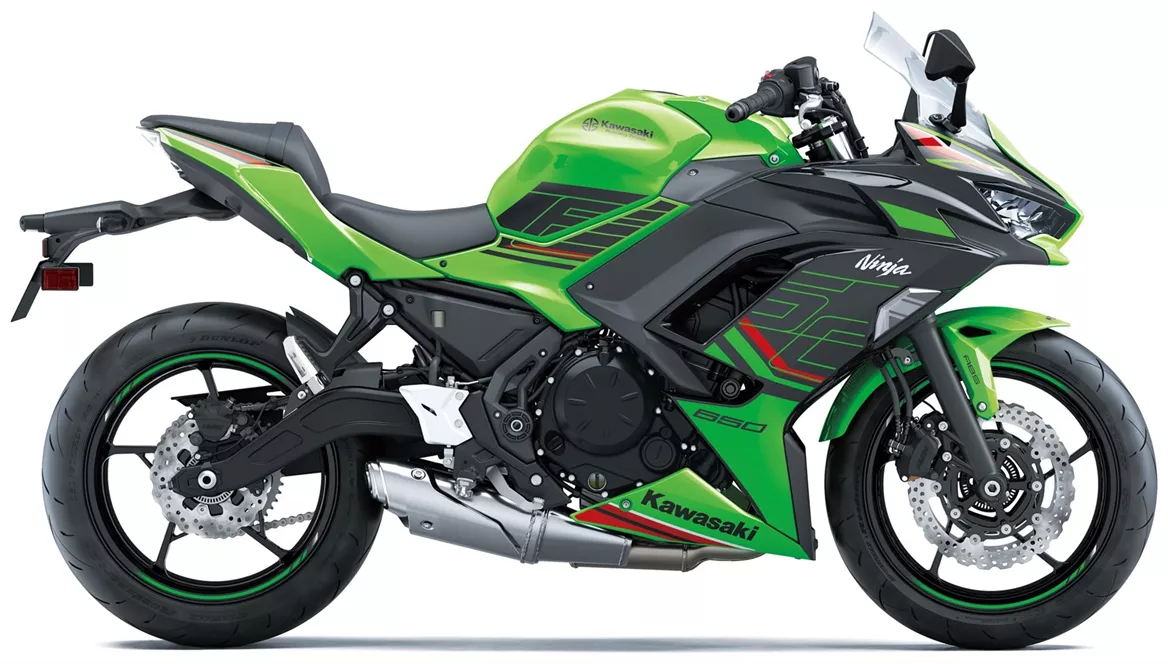
Kawasaki Ninja 650 2023
Overview - Kawasaki Z650 2020 vs Kawasaki Ninja 650 2023
The Kawasaki Z650 2020 and the Kawasaki Ninja 650 2023 are both powerful motorcycles with similar technical specifications. They both have an inline, 2-cylinder engine with a bore of 83 mm and a stroke of 60 mm. The engine power and torque are identical at 68.2 HP and 65.7 Nm respectively. They also share the same compression ratio, fuel system, throttle bore, and cooling system. The displacement of both bikes is 649 ccm.
In terms of suspension, both motorcycles feature a telescopic fork front suspension with a diameter of 41 mm and a swing arm rear suspension with a monoshock absorber. The rear suspension on both bikes can be adjusted for preload. The chassis on both models is made of steel and has a tubular frame type. The rake and trail measurements are also the same at 65.5 degrees and 100 mm respectively.
The braking system on both motorcycles consists of double disk brakes with a diameter of 300 mm and double piston calipers. The front brakes also feature petal technology. Both bikes are equipped with ABS as part of their advanced rider assistance systems.
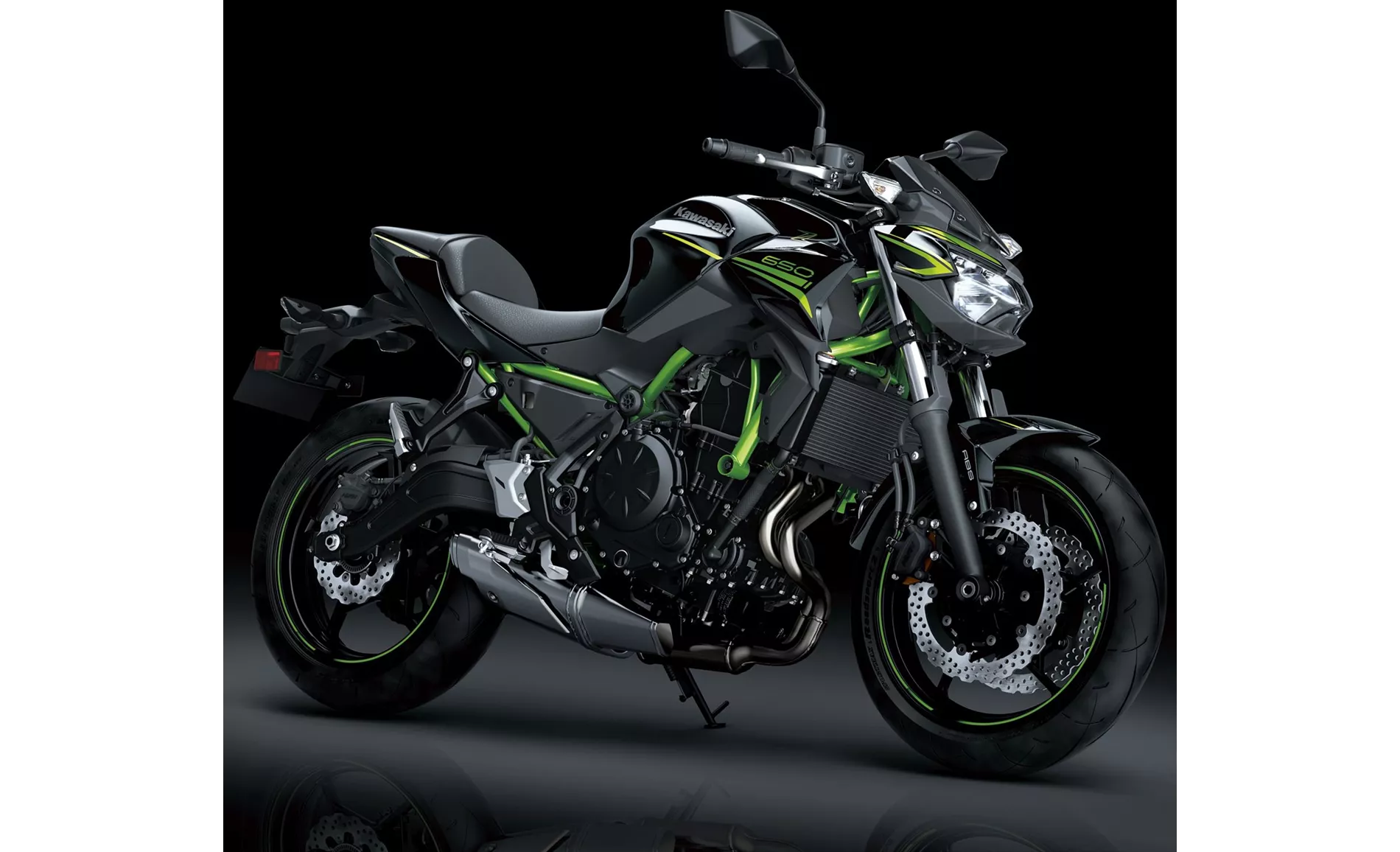
Kawasaki Z650 2020
In terms of dimensions and weights, both motorcycles have the same front and rear tire widths and diameters, wheelbase, seat height, and fuel tank capacity. The only difference is in the kerb weight with ABS, where the Kawasaki Ninja 650 2023 weighs slightly more at 193 kg compared to the Kawasaki Z650 2020 which weighs 187.1 kg.
Both motorcycles are equipped with LED daytime running lights, LED headlights, and a TFT display. These features provide enhanced visibility and a modern look.
The Kawasaki Z650 2020 has several strengths. It has a powerful two-cylinder engine that delivers a thrilling riding experience. The aggressive intake noise adds to the excitement. The compact dimensions and low seat height make it easy to handle and maneuver. The stable chassis provides confidence-inspiring stability. The TFT display with connectivity allows riders to easily access information and stay connected. Lastly, the grown-up look of the bike gives it a sophisticated appearance.
On the other hand, the Kawasaki Ninja 650 2023 has its own set of strengths. It is suitable for touring and offers a comfortable riding experience. The safety package, which includes ABS and traction control, enhances rider safety. The bike is very accessible, making it suitable for riders of all skill levels. The ergonomically versatile design ensures a comfortable riding position. Lastly, the typical Ninja look gives the bike a sporty and aggressive appearance.
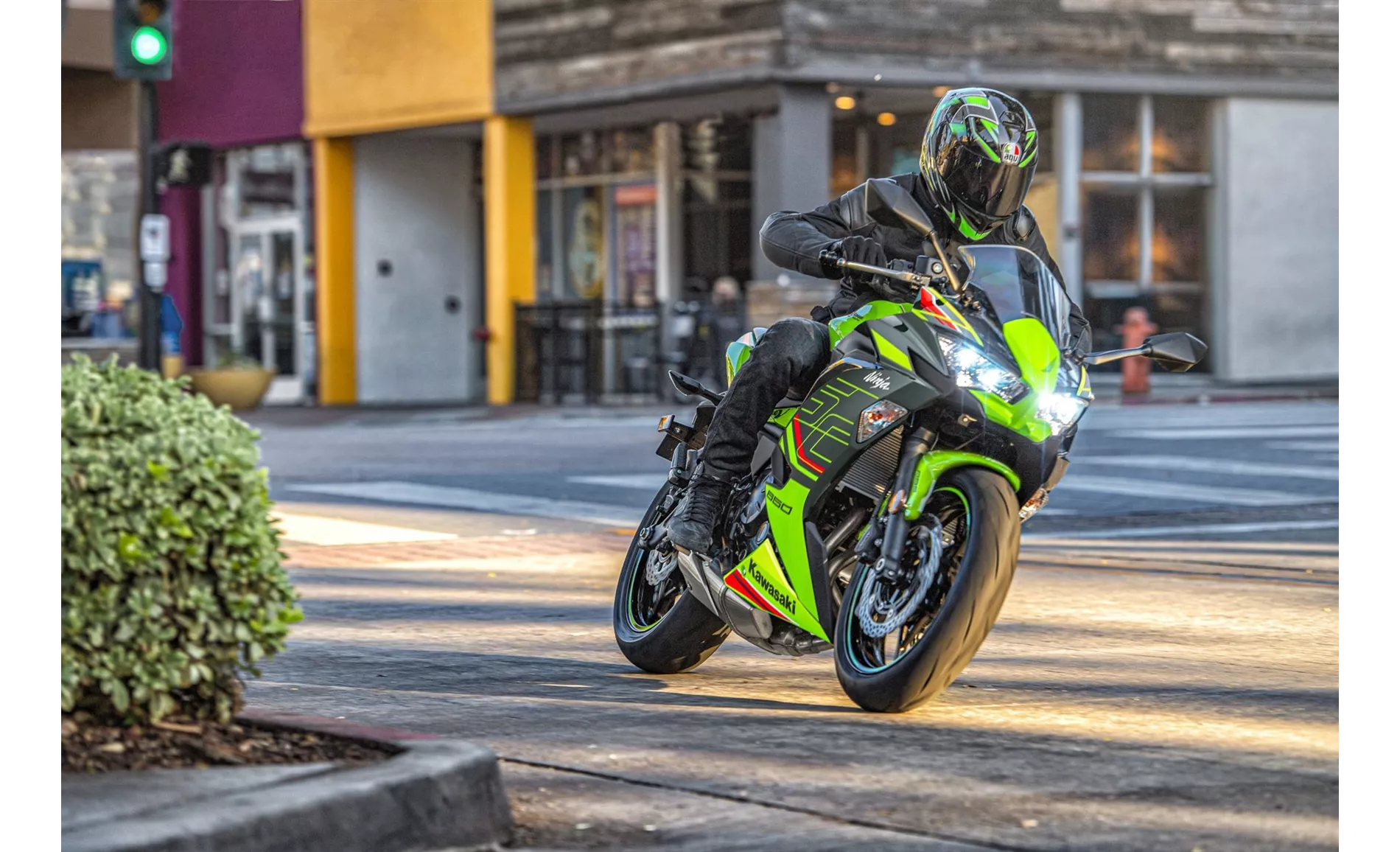
Kawasaki Ninja 650 2023
However, both motorcycles have their weaknesses as well. The Kawasaki Z650 2020 has a front brake pressure point issue, which may affect braking performance. It may also be uncomfortable for tall riders due to its compact dimensions. Additionally, the Rideology App, which is used for connectivity, may not be 100% sophisticated.
The Kawasaki Ninja 650 2023 has average chassis and brake performance, which may not meet the expectations of more experienced riders. The adjustment of the rear shock absorber is laborious, which may be inconvenient for riders who frequently adjust their suspension settings.
In conclusion, both the Kawasaki Z650 2020 and the Kawasaki Ninja 650 2023 are powerful motorcycles with similar technical specifications. They have their own strengths and weaknesses, catering to different riding preferences and needs.
Technical Specifications Kawasaki Z650 2020 compared to Kawasaki Ninja 650 2023
Pros and Cons in comparison
Pros and Cons in comparison
Kawasaki Z650 2020

It's simply marvellous what Kawasaki has put together in a complete package with the new Z650. The technical components may not knock your socks off individually, but in combination they make for a pleasantly neutral motorbike that everyone will enjoy. No bitchy idiosyncrasies - simply a naked bike that works really well on winding country roads. Of course, the TFT display, which we don't find in the competition at the moment, is a plus, as is the grown-up look, which is strongly oriented towards the larger Z models. Only the pressure point of the front brake could have been more clearly defined - but you can't have everything in this price range.
Kawasaki Ninja 650 2023
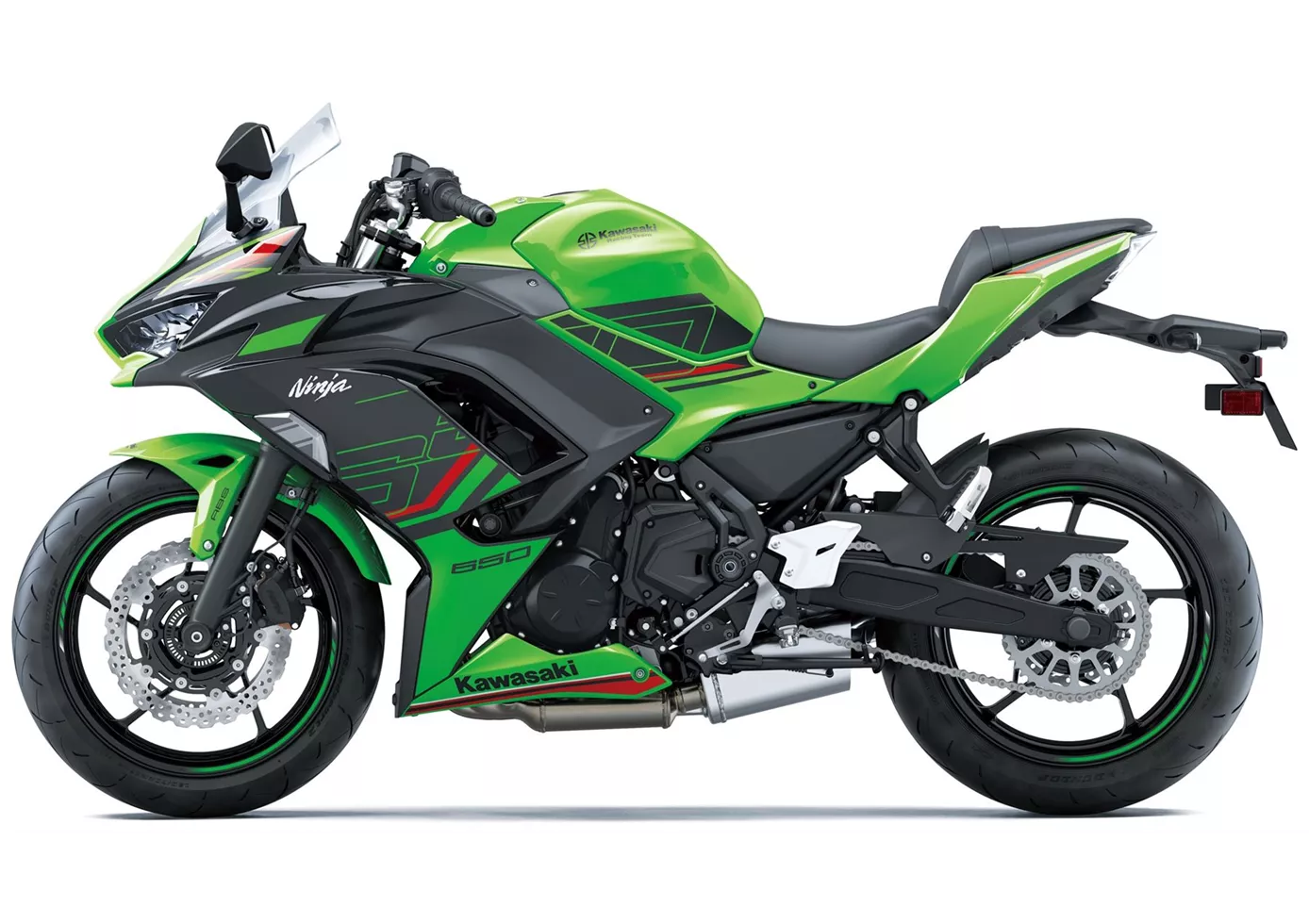
To judge the Kawasaki Ninja 650 purely on its paper form would be a serious mistake. The two-day test showed once again that performance data carries more weight at the pub table than in the wild. Kawa's sports tourer does exactly what it is supposed to and, thanks to the constant revision and the new features added for 2023, is still an enrichment for the class. Only hobby racers should be warned, as the name Ninja still stirs up a certain expectation that the 650 does not fully meet.
Price Comparison Avarage Market Price Kawasaki Z650 vs Kawasaki Ninja 650
There are a few key differences between a Kawasaki Z650 2020 and a Kawasaki Ninja 650 2023. In terms of price, the actual average price of a Kawasaki Ninja 650 2023 is about 16% higher. Compared to Kawasaki Ninja 650 2023 there are less Kawasaki Z650 2020 bikes available on the 1000PS.de Marketplace, specifically 21 compared to 112. It takes less time to sell a Kawasaki Z650 with 80 days compared to 137 days for a Kawasaki Ninja 650. Since model year 2017 1000PS.de editors have written 31 reviews for the Kawasaki Z650 and 20 reviews for the Kawasaki Ninja 650 since model year 2017. The first review for the Kawasaki Z650 was published on 11/8/2016 and now has more than 25,000 views. This compares to more than 79,600 views for the first review on Kawasaki Ninja 650 published on 10/4/2016.
